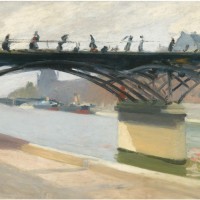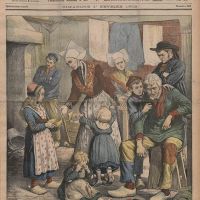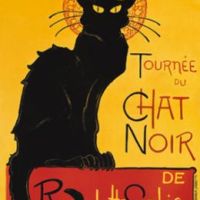On November 8, 2015, I posted a blog about my great-uncles who died in the First World War: Raymond Hummel, who died in 1916 and is buried in France (shown on the left, below); and John Lonsdale Sieber, known as Jack, who fought in France and German East Africa, died in 1917, and is buried in what is now Tanzania.
During my research into their lives and deaths, I made contact with Jack’s school, Perth Academy in Scotland, which honours former students and staff who fell in the First World War on the 100th anniversary of each death. This project is known as “Flowers of the Forest,” the name of the traditional Scottish bagpipe lament played at funerals, and was launched by a retired teacher from the school, Dave Dykes.
In 2015 I resolved to be at Perth Academy in October 2017, along with as many members of my family as possible, to pay tribute to my great-uncle Jack Sieber. In the end, there were nine of us there on the day: Norman and I, my sister Alison and niece Alex, my cousin Jane and her son Andrew, and my cousin Ian with his wife Yvonne and her daughter Amanda. Ours is a small and scattered family and nine of us in the same place at the same time is quite an accomplishment.
The event actually took place 100 years and one week after John’s death, because the preceding week the school had been on its annual “tattie-hawking” holiday. As Dave Dykes explained, “Schools in this part of Scotland traditionally have a holiday in October so that the children can help with the potato harvest. In Scots, tattie hawking means lifting or harvesting the potatoes or tatties.”
The day began for us at St. Ninian’s Cathedral, the Episcopalian church my great-uncle’s family attended, which also has a war memorial on which he is mentioned.
When my niece asked about the difference between the layout of an Episcopalian church and that of a typical Church of Scotland building, the cathedral guide promptly walked us down the road and asked someone at a nearby Scots kirk to open up and allow us in. As we walked into the church, the man pointed to several plaques with the names of war dead on them – plaques from churches that were now closed, which had been brought to this surviving church. I wonder how many war memorials are lost when churches close.
We then visited the Black Watch Museum in Balhousie Castle. We were there because my grandfather, Alexander Campsie, who survived the Great War, served in the Black Watch. (After the war, he became a military chaplain with the Royal Navy.)
The Black Watch also commemorate their fallen in the First World War and my sister and I found ourselves placing crosses for two of the three men who were honoured that day. What you see is a fence into which individual crosses have been placed. This is just the Black Watch, just three years into a four-year war.
The cross I placed had the name Thomas Birch. I later looked him up. He came from a desperately poor family in Perth, spent time in reform school, and died from a gunshot wound in the Perth Hospital at the age of 19. It’s possible that he died as the result of a training accident. Not an illustrious career, but he signed up and he served, like all those commemorated.
The tour of the museum was led by a knowledgeable young man who focused his talk on events and objects that would be meaningful to those who might otherwise be unmoved by military history. As we came out of the museum, the sky cleared and the sun came out, and the rest of our week in Scotland seemed to be bathed in sunshine – not a common experience in autumn.
We had lunch together as a family and went to the school in the late afternoon. Perth Academy is a modern building on the outskirts of the city, not the building that my great-uncle would have known. And not just my great-uncle – both my grandparents on my father’s side attended the school, and a great-aunt taught there. Only recently have I realized what an important role the school played in the life of my father’s family.
The old school was on the edge of the downtown area, part of an elegant terrace facing a park called the North Inch.
The school’s war memorial was mounted on the façade (you can see the place it occupied between the ground-floor windows), but when the school moved, the memorial went with it, and is now in the assembly hall of the new building, where the ceremony took place.
The students read out a short biography of Jack Sieber and the history teacher who oversees the Flowers of the Forest project, Laura Hobson, read the letter sent by Jack’s commanding officer to his wife. My cousin Jane had brought “the King’s Penny” – the inscribed copper disk sent to the relatives of the fallen – to be part of the small display set up on a table in front of the war memorial.
Jane and I later talked about how we remembered seeing it for years at our grandmother’s house and not really taking in what it was or what it meant. Our grandmother always kept it brightly polished. She grieved for her only brother for a very long time.
After the short commemoration ceremony, there was an evening of food and entertainment called “Stovies, Songs, and Stories.” Stovies are a traditional form of stew made with meat, potatoes, and vegetables, often served with oatcakes. Apparently there are as many recipes as there are Scottish cooks. These ones were good. There was Scottish shortbread to follow.
The band played, there was a piper, we all sang, the head girl and head boy read poems and letters, and there were presentations showing all the men and one woman from the school who gave their lives, as well as photographs from the students’ annual visits to the war cemeteries in France. I presented the library with copies of two Canadian books about the war (Vimy by Tim Cook and The Wars, a novel by Timothy Findley) as a thank-you for the welcome we had received.
Later, I found myself talking to some teachers, and one asked me if I visit Scotland often. I explained that as a child, we came to Scotland nearly every year to visit my grandmother in a village called Gifford (shown below).
It’s a pretty place, but rather quiet. I remember playing croquet in the minister’s garden, borrowing Miss Whitsun’s ancient clanky bicycle, or walking in the surrounding countryside, with occasional visits to Haddington, a small town with an enticing sweet shop. My cousins lived in Motherwell, an industrial town near Glasgow that seemed wildly exciting by comparison (there was a cinema). My grandmother died just before I graduated from university, my cousins scattered to different places, and somehow I never saw much reason to go back to Scotland. But I do now, and I will.
I chose the title “The Auld Alliance” for this blog because it is the name for a 13th-century agreement between the Scots and the French (against the English, of course), and the name of a pub in Paris on the rue François Miron in the Marais, the only link to Paris I could think of. Perhaps we will venture in on our next visit.
Text by Philippa Campsie, photographs by Philippa Campsie, Dave Dykes, or from the Perth Academy Flowers of the Forest Twitter feed. Our thanks to Dave Dykes, Laura Hobson, and the student members of the Flowers of the Forest project for a warm welcome and a memorable occasion.

































I really enjoyed reading this. I’ve also done a lot of research on men in my family who fought and died in WW1. This year I went to France, to the battle fields of the Somme, and saw their names on the memorial. I didn’t think write about it, didn’t think anyone would be interested, but your story has made me think again.
Dear Trish, thank you so much for your comment. I hesitated to put all this in a blog, especially a blog focused on Paris, but I am now glad that I went ahead. I think with the ongoing commemoration of the Great War, people are interested in finding connections with that period. You should write up your own experiences. Philippa
Thank you for sharing this very personal, touching memory. I wish we had records of our family from last century.
Dear Gail, There is a lot of online material from the last century that makes it possible to find things that were previously unfindable. If you would like some suggestions about where to start, write to parisianfields@gmail.com and share some details. I might be able to help. Philippa
Thank you for sharing this. I wish I knew more about a great Uncle of ours. He went and fought in the WW1 in France and with his brother. Unfortunalty his brother died there. This year my sister and I went to the Somme Battlefields to pay our respects to all who fought and died. I must do some more research.
If I can help in any way, do let me know. I have done quite a lot of research about WWI soldiers, and have learned a few things. Philippa
thank you so much Philippa. I have learnt a little today. It was my great Aunty her brother who died in France and my great Aunty her husband was injured in France. I have been looking at Australian Records but its all over the place not in order at all. Perhaps you can help would be wonderful. His name was Fredrick Hawkes I am not sure of his age though. Was born in Western Australia . Her husband was William Charles Lehman and he was born in South Australia in 1898 and was wounded in France.
I believe that this is the record of your great-uncle, from the database of the Commonwealth War Graves Commission.
Frederick Henry Hawkes
Private, Service No. 5728, Australian Infantry
Died August 18, 1917
Buried Messines Ridge British Cemetery
https://www.cwgc.org/find-war-dead/casualty/482438/hawkes,-frederick-henry/
He was 23, the same age as Jack Sieber when he died.
Best, Philippa
Yes thats him thank you so much xx I must get there one day
The Auld Alliance, Paris is a friendly pub, managed by a Scot, and I am sure you would be welcome! They even serve haggis.
It’s definitely on the list for our next visit. I shall make a point of trying the haggis (which I quite like).
If Alan C. speaks well of the pub in Paris, I’ll go!
Pingback: A pebble for Clare | Parisian Fields